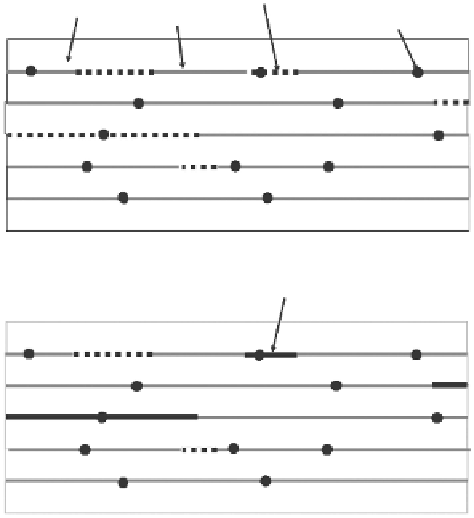Environmental Engineering Reference
In-Depth Information
(a)
Geomembrane
panel
Defective seam
Good seam
Destructive test
Before repair
Repaired seam
(b)
After repair
Figure 13.48
Coneptual model of seam quality and destructive testing for QA/QC of geomembrane liner.
To assess the optimal frequency for destructive tests, a two-state Poisson model was devel-
oped (Gilbert 1997). This model is described by two model parameters: the mean fraction of
defective seam length and the mean length of defective seam segments. Data from geomem-
brane installations were used to develop typical values for these model parameters. Monte
Carlo simulation was then used with Bayes' Theorem to determine the updated percentage of
defective seam length repaired as a function of the sampling interval relative to the mean length
for a defective segment (
Figure 13.49
);
for small sampling intervals close to 100%, the defective
seam is detected and repaired. However, there is a cost to small sampling intervals beyond the
cost of testing since destructively sampling the membrane requires cutting holes in it.
A simplified analysis was performed to assess the value of information from destructive sam-
pling. The cost of having a defective seam in the final installation (after QA/QC) was assumed
to be proportional to the length of the defective seam, and the cost of destructive testing was
assumed to be proportional to the number of samples. Results are shown in
Figure 13.50
for
the expected net benefit from destructive testing, where the expected net benefit is the expected
cost with QA/QC less the expected cost without QA/QC. The optimal sampling interval corre-
sponds to about 50 m. The practical significance of this result is that typical sampling intervals
today are in the order of 100-150 m. Therefore, there is significant potential to improve the
value of the information from destructive testing by reducing the sampling interval.
13.6 SuMMarY
This chapter has described a framework and provided practical tools and insights for assess-
ing the value of information to design site investigation and construction quality assurance

Search WWH ::

Custom Search